If you listen to perpetually-excited media, air taxis will soon be shuttling people hither and yon in all the big cities of the globe. Executives and shoppers will be whisked around downtown skyscrapers silently, quietly, swiftly, and the cost will be modest. Do you buy all that? I’m not holding my breath.

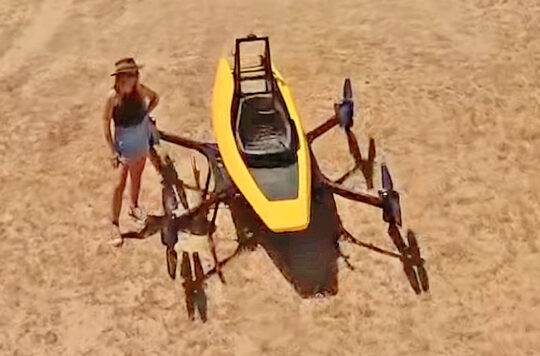
Several people at the very pinnacle of FAA have departed the agency and are now working for air taxi developers (naturally, they are often called by some term other than the mundane “air taxi” label). Even the late Acting Administrator Billy Nolan split for a big job at one of these companies.
Present-Day Reality
Let’s come back to reality in the world of light, recreational aviation. This is our space and I enjoy following it.
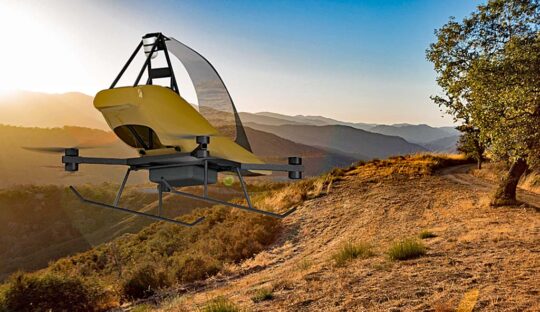
You never heard of these aerial contraptions until a very few years ago. Yet we have five entries purely as Part 103 vehicles. Honestly, I’ve watched closely and we’ve haven’t seen that many new Part 103 candidates in years.
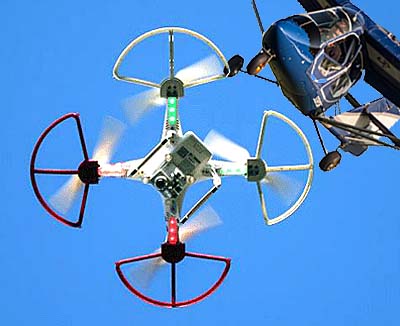
I had a DJI Vision quadcopter for a while. I enjoyed flying it and used it to learn more about these things. Yet what I always wanted was a person-sized version that I could take for a local flight.
I’ve mentioned this fanciful dream to a number of aviators. If I ask fellow pilots if they would like to take one for a spin, the answer is commonly not only, “Yes,” but “Absolutely!” Of course, all of us who are similarly enthusiastic harbor concerns that the software must be exceptionally robust. It may be to that point now; I simply don’t know. When flight control software is highly reliable, these multicopters might become the safest aircraft you could fly.
When fully proven, lots of people may want to go aloft. In fact, I’ll bet hugely more people will do this than will go pay for conventional flying lessons.
Here are the five currently vying to capture your business:
- Lift Aircraft Hexa — my January 2022 article
- Opener BlackFly — my July 2018 article
- Jetson One — my February 2022 article
- Ryse Recon — mentioned in this January 2023 article
- Rotor X Dragon— covered in this article
This does not include models that have been discontinued — and yes, these were also Part 103 single seaters:
- Kitty Hawk Flyer — mentioned in this December 2019 article
- Hoversurf Scorpion — my October 2018 article
- others I may have missed, especially from overseas
Rotor X Dragon
Here’s another producer you don’t know… well, maybe you do know them. You might not know Rotor X Aircraft but you’ve probably heard of RotorWay.
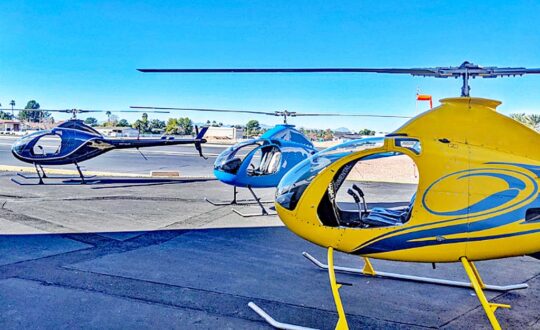
Rotor X’s Phoenix A600 Turbo aircraft on the ramp at home base in Chandler, Arizona.
In 2021, Rotor X Aircraft purchased kit helicopter company, RotorWay International, founded in 1961 by B.J. Schramm. Under the former and current brand, the company boasts a heritage of manufacturing the most produced two-seat kit helicopter in the world — “over 2,500 as of December 2022,” they claim. Based in Arizona, Rotor X Aircraft offers the two-seat Phoenix A600 kit turbo helicopter (nearby image).
Rotor X announced in 2021 that they would be “entering the electric air taxi market with an electric vertical takeoff and landing (eVTOL) quad-rotor helicopter.” A partner Rotor X teamed up with to fulfill this dream, Advanced Tactics, “secretly started developing an eVTOL ultralight kit passenger aircraft named Dragon,” reported Electric VTOL News.
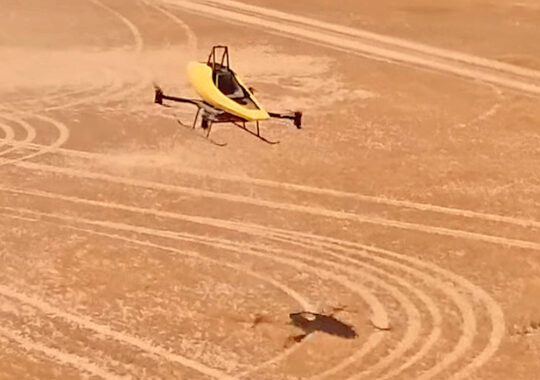
Dragon is videoed while flying without a human occupant during preliminary evaluations.
Because Dragon is is a kit multicopter, “the company will also have builder assist and pilot training facilities in several locations in the USA including California, Arizona, Texas and Georgia.” A Dragon kit is predicted to ask only a week or two for assembly.
Likewise Rotor X said Dragon “requires only a few hours of training that includes following FAA Part 103 flight regulations for ultralight aircraft. No pilot license is required.” The company also announced plans to make a two-seat version of the Dragon aircraft for pilot training.
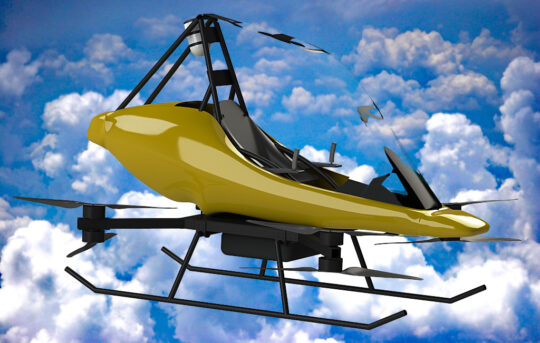
Development of Dragon eVTOL ultralight kit was funded entirely by Advanced Tactics, Rotor X reported. Dragon is licensed by Rotor X to produce, market, and sell. “The first production Dragon kit is expected to roll off the assembly line in Chandler, Arizona by the fall of 2023.” Pre-order price was stated at $85,000 “for the first 100 Dragon kits sold.” Then the kit price will rise to $99,000.
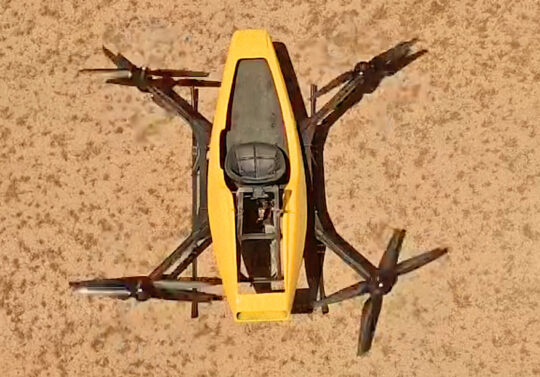
Hmmm, August this year looks interesting with Dragon’s first shipment and FAA’s Mosaic NPRM hitting the streets. Want to bet which comes first?
TECHNICAL SPECIFICATIONS:
Rotor X Aircraft Dragon Part 103 kit
all specification provided by the manufacturer
- Aircraft type — eVTOL passenger multicopter
- Occupants — 1 pilot
- Maximum Speed — 63 mph (55 knots)
- Flight Duration — 20 minutes
- Empty Weight — <254 pounds
- Maximum Payload — 250 pounds
- Electric Motors & Propellers — 8
- Battery Recharge Time — 2 hours, batteries can be quickly swapped
- Fuselage Construction — Carbon fiber composite with canopy over cockpit
- Landing gear — Fixed skid landing gear
- Safety features — Distributed Electric Propulsion (DEP) so if one or more propellers (ducted fans) or motors fail, the other working propellers (or ducted fans) and motors can safely land the aircraft. There are also redundancies in the sub-systems of the aircraft. The aircraft has an emergency ballistic parachute.
Article Links:
- Rotor X Dragon, company website
- Info for other Part 103 multicopters — see links above


Why has Sport Copter been totally neglected in your gyroplane reporting. I have not heard from them in years but Jim and company are still making gyros. Can you check and see if they are viable anymore? Their website is still up. The last I saw he was working on his M2 which has like 3 ft wings on them. I think it is a good idea Thank for the follow up.
I’ll try again after Oshkosh. I have never seen this aircraft at an airshow I attend.
$100k for a one seater UAV with an endurance of 20 minutes. You can try to minimize that all you want but it is still a rich man’s toy. Unfortunately there will always be plenty of people with more money than sense who are willing to pay it. That’s what keeps flying even the cheapest aircraft like UAVs, LSAs etc unaffordable for the rest of us. No wonder there a pilot shortage that’s only getting worse. When people can’t afford an airline ticket because the cost of a qualified crew is so exorbitant maybe they’ll wake up and really try to make flying affordable and attractive to the average Joe again.
Price point follows conventional aircraft costs unfortunately. Breaking that trend for “Joe” Public seems as difficult as breaking the sound barrier. $100K to hover, fly for a 20/30 minute thrill ride? One would be better to hit the theme parks for that same exhilarating experience on a coaster at a far less price ….smh
I have built a jet exec and am interested in a new kit.
Way too high on cost, R U high?
The maximum flight duration and speed for examples like the Dragon and the Jetson limits their range too severely for them to be practical commuting vehicles or even to do a bit of light shopping. Their electric design does position them well for impending battery developments that may soon double their range, though not their other performance parameters. The private solo flyer could do better with a Mirocopter that is not electric and costs only a third as much. And it can autorotate. Of course, I’d like to see a hybridized Mirocopter version that powers the rotor system with one or two electric motors to eliminate drive-belt maintenance and other drive wear deterioration, and powers them with a combination of battery and a lightweight linear inline free-piston combustion generator to extend its range.
If Dragon is planning on doing commuter work or toting shoppers around, they have the wrong vehicle. This is for fun and, initially, I’ll bet 20 minutes is enough.
20 minutes might seem OK to someone whose time frame of fun is modeled on the downhill skier who is willing to ride a chairlift just for the thrill of sliding back down the hill. Maybe that works for sailplane pilots as well, though they may be able to extend their fun with the help of a rising thermal. But such could never satisfy my sense of the “freedom” of flight.